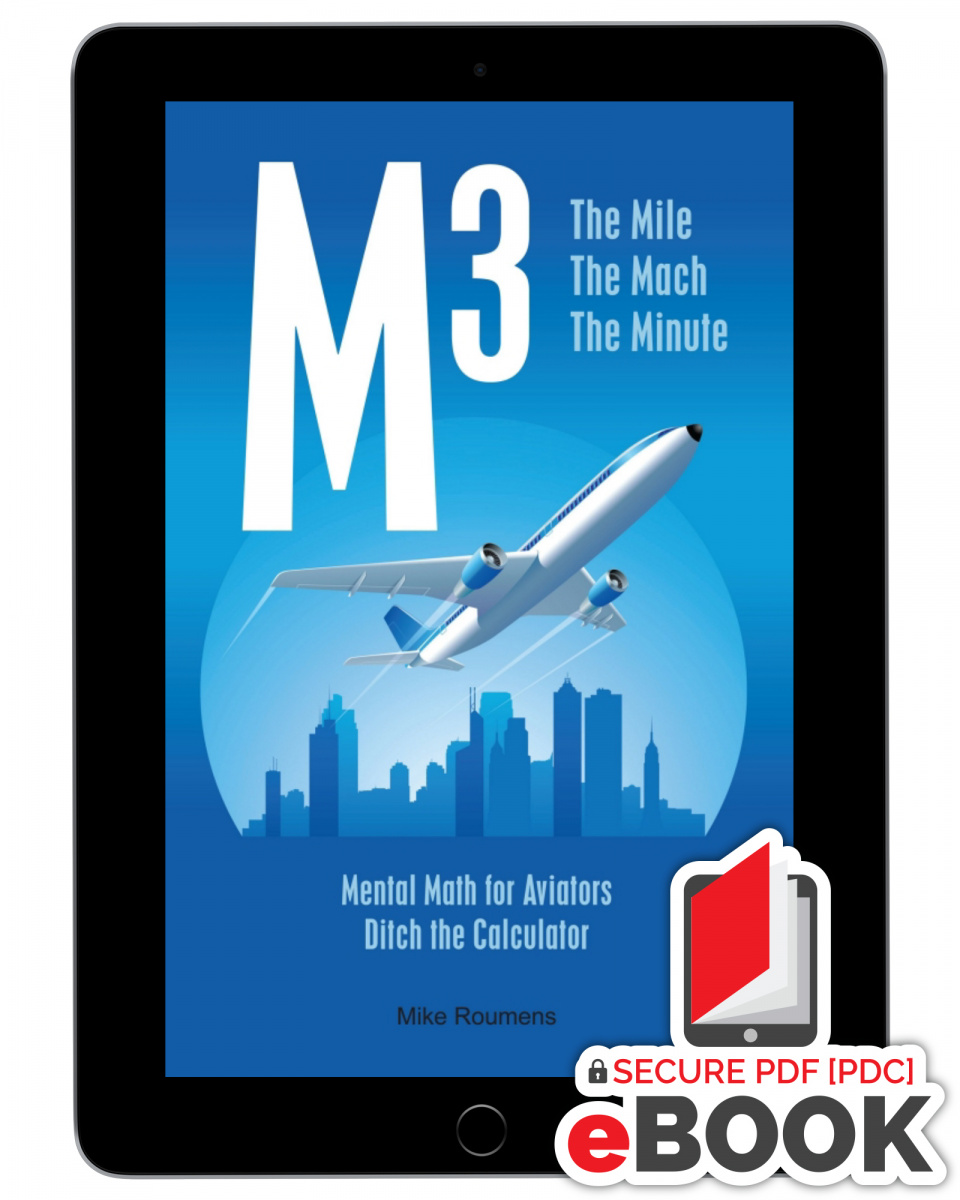From the Introduction:
Today's aviation training material is loaded with formulas. It is part of the requirements for theoretical exams and is meant to validate a certain level of knowledge before taking flying to a more practical level. But applying formulas while flying is time and energy-consuming, and often not an option. No pilot wants to pull out a calculator in flight and divert his or her attention from the task at hand. But sometimes it seems there is no other way.
The proficient pilot uses airmanship to determine when mental shortcuts are relevant or not. In many situations, a rule of thumb can be used instead of precise measurements. However, it is strongly advised that pilots obtain accurate factual data for all aspects of takeoff and landing performance, weight and balance, obstacle clearance, and refueling and fuel management. Use mental models in these situations only as a crosscheck to ensure no gross errors were made while using calculators, graphs, charts, and tables.
From the recreational pilot to the airline captain, processing information quickly and mentally is key to remaining focused on the essentials: flying the aircraft and navigating by making the correct adjustments. With an accurate mental picture, situational awareness is increased, which leads to better reactions and better judgment.
This book is intended to simplify the usual computations that pilots need to make on any flying day. As such, it is not claiming to be accurate, nor to replace formal aviation training. Most rules of thumb are, at best, approximations.
They help in getting a general idea on a specific subject, but they can also become valuable tools when cross-checks are needed - for example, when doubting the information displayed by a flight instrument, during failure of various systems, or a lack of redundancy. The aim here is to get rid of the calculator as much as possible while obtaining workable results - in the correct sense - with a reasonable error margin.
The material discussed here has been simplified as far as practical, and only high school or a secondary cycle is sufficient to get a full understanding of all subjects covered. Nonetheless, technical terms, units, and examples are aviation specific, so aviation theory for a private pilot license or higher is expected in order to take benefit to the greatest extent.
Topics Include:
THE BASICS
- The nautical mile and a little bit of history
- The 1 in 60 rule (or 60:1)
- Speeds and time
- Angles
- Conversions
- Note on the use of autopilot
SPEED, TIME, AND DISTANCE
- CTM graph
- True airspeed (TAS)
- Mach number and TAS
- That aircraft ahead of you
ANGLES AND GRADIENTS
- Climb and descent gradients
- Calculating a top of descent (TOD)
- TCAS RA, pitch change, and VSI
- Approach, glide path, flight path angle (FPA)
- Radar tilt and beam width
WINDS, COMPONENTS, AND DRIFT
- A little trigonometry and the 1975 rule
- Headwind, tailwind, and crosswind components
- Drift correction angle from XWC and vice versa
- Maximum wind effect
- Pythagorean theorem and a simplification
- The wind diagram on your HSI or ND
- Correcting drift during approach
USING NAV/RADIO AIDS
- Time and distance to station without DME
- GPS or IRS and DME distance differences
- Maximum theoretical range of a VHF signal
- Database waypoint naming rules
BANK ANGLE, TURN RADIUS, AND HOLDING
- Bank angle and standard rate-of-turn
- Turn radius
- Lead turns and radial interception angles
- Holding pattern drift and time corrections
- Turn anticipation on large aircraft
GENERICS ABOUT THE ATMOSPHERE
- Pressure, temperature, and ΔISA
- Altimeter setting and true altitude
- Pressure altitude
- Density altitude
- Relative humidity
- Altitude corrections in cold weather
- Instant ΔISA temperature reading during climb or descent
- Condensation level and cloud base
- Ram rise
How To Get And Use Your Secure eBook with Safeguard Viewer
Secured eBooks are offered through a system called Safeguard Viewer which makes protected eBooks easier to read and view. The Safeguard Viewer application is compatible with Windows, Android, macOS and iOS devices. Visit this
LINK to get the Safeguard Viewer application. The Safeguard Viewer PDC files include all the familiar features found in standard PDFs. Our eBooks are authorized to use on up to six (6) supported devices. Your files are authorized to you and can be viewed online or offline. Secured PDCs may be used on any device that supports the Safeguard Viewer application The download process is three (3) easy steps:
- Install the Safeguard Viewer application found in your second email from licensing@actechbooks.com
- Download your license from that same second email. Note: A license is only needed once, if you lost your license, or change emails address, send us your email and order number and we will resend your license to download right away. Also, you will need to be online the first time you open your eBook, so your license can be authorized.)
- Open and enjoy your new eBooks and experience. Please let us know if you have any issues-anytime! techsupport@actechbooks.com
